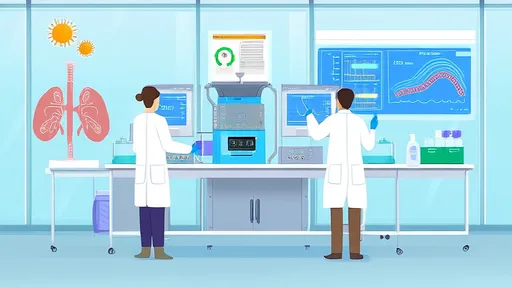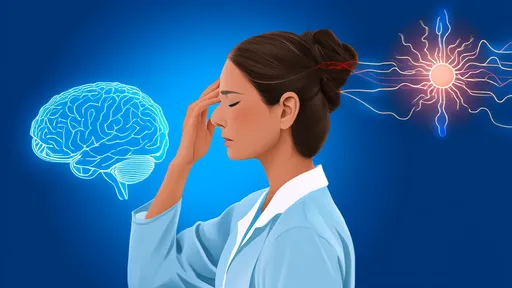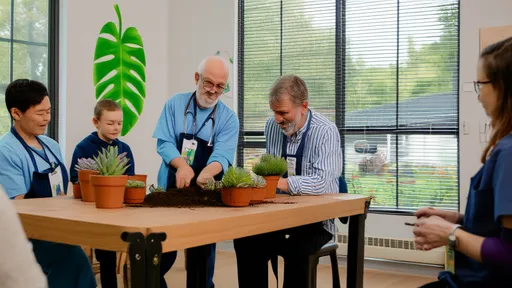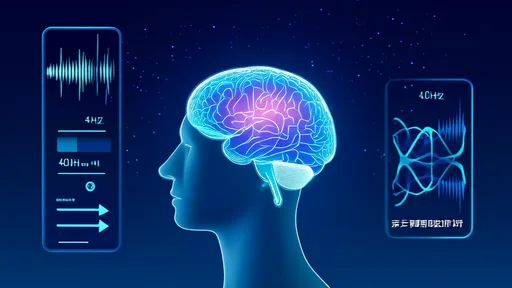The relationship between olfactory stimuli and memory consolidation has fascinated neuroscientists for decades. Unlike other sensory inputs, smells have a unique pathway to the brain's memory centers, bypassing the thalamus and directly engaging the limbic system. This direct connection may explain why a whiff of a familiar fragrance can instantly transport us back to a long-forgotten moment in time. Recent studies have delved deeper into this phenomenon, uncovering mechanisms that could revolutionize how we approach memory-related disorders.
Researchers have long observed that odors serve as powerful cues for autobiographical memories. The famous Proustian effect describes how the scent of madeleine cakes triggered vivid childhood recollections for Marcel Proust. Modern science confirms this isn't merely poetic license—functional MRI scans show that olfactory processing activates the hippocampus and amygdala more intensely than visual or auditory cues. This neural activation pattern suggests smell might offer a backdoor to enhancing memory consolidation during critical windows of neuroplasticity.
Sleep studies have produced particularly compelling findings about odor-enhanced memory. German researchers discovered that exposing sleeping subjects to the same rose scent they encountered while learning new information significantly improved next-day recall. The effect wasn't limited to declarative memories either—procedural skills like piano playing showed similar enhancement when paired with congruent olfactory cues during slow-wave sleep. These findings hint at odor's potential to amplify the brain's natural memory replay processes that occur during slumber.
The biological basis for this phenomenon lies in the anatomical proximity of olfactory processing and memory systems. The piriform cortex, which deciphers smells, shares extensive connections with the entorhinal cortex—the hippocampus's main gateway. This privileged access allows olfactory signals to influence memory consolidation at multiple levels, from synaptic strengthening to systems-level reorganization. Neurochemical studies reveal that odor exposure during learning modulates acetylcholine and noradrenaline release, neurotransmitters crucial for memory encoding and storage.
Clinical applications of these findings are already being explored. Alzheimer's patients exposed to familiar odors from their youth demonstrate improved autobiographical recall and emotional well-being. Rehabilitation centers are experimenting with odor-tagging techniques to help stroke victims recover motor skills more efficiently. Even in educational settings, preliminary studies suggest strategic use of ambient scents during lectures and study sessions may boost academic performance, though the optimal timing and scent profiles require further investigation.
However, the olfactory-memory connection isn't without its complexities. Individual differences in olfactory sensitivity, cultural associations with specific scents, and the emotional valence of odors all modulate the effect's strength. Some studies indicate that unpleasant smells might enhance memory consolidation more potently than pleasant ones, possibly due to their heightened salience. The interplay between odor intensity and memory also follows an inverted U-curve—too faint and it goes unnoticed, too strong and it becomes distracting.
Emerging technologies are pushing this research into exciting new directions. Portable olfactometers now allow precise odor delivery synchronized with specific learning phases. Virtual reality systems incorporate scent components to create more immersive and memorable experiences. Meanwhile, advances in neuroimaging let scientists observe odor-induced memory consolidation in real-time, revealing how different frequency brain waves coordinate this process across distributed neural networks.
The evolutionary perspective offers the most profound insight into why smell and memory share such intimate neural real estate. As the oldest sensory system, olfaction served as primitive organisms' primary means of navigating their environment—identifying food, mates, and predators. The memory systems likely co-evolved to support these survival functions, creating an enduring link that persists in modern humans despite our reliance on other senses. This deep biological heritage may explain why olfactory cues can trigger memories we didn't know we retained.
Future research aims to develop targeted interventions for memory disorders and cognitive enhancement in healthy populations. Pharmaceutical approaches might focus on amplifying the neurotransmitter systems activated by odor cues, while non-invasive techniques could pair specific scent protocols with memory reactivation during sleep. As we unravel the molecular dance between odor molecules and neural circuits, we edge closer to harnessing one of our most ancient senses to sharpen one of our most human capacities—the ability to remember.

By /Jul 14, 2025

By /Jul 14, 2025

By /Jul 14, 2025

By /Jul 14, 2025

By /Jul 14, 2025

By /Jul 14, 2025

By /Jul 14, 2025

By /Jul 14, 2025

By /Jul 14, 2025

By /Jul 14, 2025

By /Jul 14, 2025

By /Jul 14, 2025

By /Jul 14, 2025

By /Jul 14, 2025

By /Jul 14, 2025

By /Jul 14, 2025

By /Jul 14, 2025

By /Jul 14, 2025